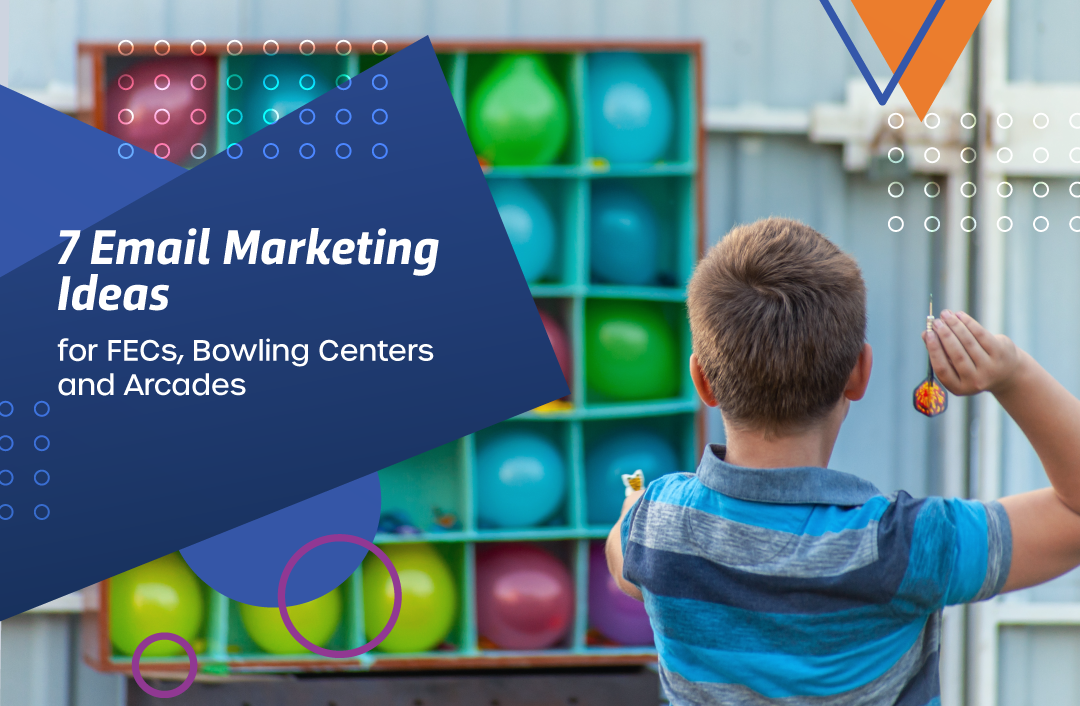Offer your guests a better sales experience online with a cohesive online store.
Your online store is a critical component of your sales team. But there is a lot more to effective online sales than simply adding your inventory to an online store. Today’s blog features insights first published in our CenterEdge Help Center by Technical Writer and client eCommerce theming expert Lena Plaut.
Though she’s been a member of the training team for nearly five years, she also has a wealth of knowledge in this area, with 15 years’ worth of experience in digital media. Read on for Lena’s top tips to help you deliver a better online experience, and be sure to check out other training team blog posts and documentation in the CenterEdge Help Center.
Written By Lena Plaut
Did you know a good website and eCommerce site can literally make your products more valuable? Especially in an age when people do most of their shopping online. A study from the International Journal of Quality and Service Sciences states as much in their conclusion that the “perceived quality of website services has a positive and statistically significant impact on perceived value, satisfaction and an opposite effect on perceived risk.”
Your main website and your online store work together to produce the overall customer experience. They should address the two main concerns people have with shopping online: security and convenience. As our legacy webstores reach their end of life, it is now a great time to evaluate how your business handles its web version. Here are some tips to help you skew these factors in your favor.
No. 1: Security
Most people are afraid of getting scammed or having their information stolen online, and this fear isn’t unreasonable. CenterEdge has all the backend security already worked out, though, including secure processing with CenterEdge Payments, but customers can’t easily tell that unless they’re given some clues. Luckily, most of those clues don’t require any knowledge of any web security at all.
No. 2: Consistency
At some point, your customers will have to move from your main site over to your eCommerce site. One way that will make someone think a transaction is risky is for the whole look of the page to change as soon as they begin the buying process. If the online store looks like a completely different site, users might get suspicious, confused, or doubt they are buying from the business whose site they were just browsing.
At a bare minimum, use consistent colors, imagery, and fonts to maintain your brand and transition smoothly from one site to the other. Get the exact numeric values for your brand colors if possible because many people can spot a small change in hue easily, which can be a red flag. The closer the eCommerce site looks to the main site, the better people will feel about the purchase. In the best-case scenario, customers won’t even notice the switch.
Advantage online stores have a built-in theme manager where you can easily change things like brand colors on the site. They also have an area where you can enter custom CSS to make things even more consistent. If you feel like matching your webstore to your main site is beyond your expertise, CenterEdge can also do it for you. Contact Support to get an estimate if you want to go this route.
No. 3: Professionalism
Even before users make it to the eCommerce site, the main site’s professionalism influences people’s perception of security. Professionalism doesn’t mean cold or bland; it just means well done. Consider purchasing a website template or having your site designed by a professional if you do not have design experience. Having a high-quality design goes a long way in legitimizing your business. If a site looks like someone who knew what they were doing designed it, people are more likely to think you know what you’re doing in other areas; this includes knowing how to provide a secure transaction experience.
Professionalism also includes having a sense of being complete and error-free. CenterEdge online stores come with placeholder images by default for components like areas and retail items. Customers should never see a generic placeholder image or description. Having generic placeholders leaves the site feeling incomplete, like maybe you’re new or haven’t worked everything out yet. Adding your custom images indicates you’re presenting a finished product.
You should make sure any copy you include has no mistakes. According to a Stanford study, one of the top ways to boost your site’s credibility is to “eliminate errors of all types. No matter how small they seem.”
Other items on the Stanford list that will help make your site more credible are:
- Update your site’s content often
- Make it easy to contact you
- Show there’s a real organization behind your site.
These all have to do with the relationship customers feel they have or can have in the future with you. If multiple means of contacting you are prominently displayed, such as email and phone number, people will feel like you are available if there is a mistake or they need something.
No. 4: Fresh Content
Similarly, if returning customers see everything looks the same many months after they first visited your site, it can give the impression you are no longer active or that you may not be easy to reach. Websites can be on the web whether someone manages them or not, so it is important people know it is up to date. Changing it up also makes it more fun to come back. For example, if you add new seasonal elements or graphics every few months, your site will feel festive and interesting. It is important that you not stray too far from your branding and colors because you still want your customers to be confident that the site is legitimate.
Updating your site often sounds like a daunting task at first, to change the site seasonally, like something you might not be able to keep up with, but it is easy, at least on the eCommerce side of things. Spend a few hours or days building your new looks for the entire year, save them, and simply come in and quickly switch them on when they should be active.
No. 5: Convenience
Consumer attention spans are growing shorter, so getting to the point is more important than ever. While some customers will want to peruse your website for information about what you offer, and that information should be available, many people visiting your site already know they want to make a purchase. A major influence on whether they follow through is how easy you make it.
No. 6: Action
People hate clicking things. Clicks are the online equivalent of standing in line. The more time you spend doing it, the more likely you will leave and find somewhere that is easier to access. Because your main website and webstore have to work together, there is almost always going to have to be at least one click for a customer to make a purchase.
But you can help make it the first click for people who already want to buy and aren’t just browsing by having a prominent call to action on your homepage and every page throughout your site. Make sure users can take action when they click “Buy Tickets” or “Book Now.” Make the buying process easy for your customers by linking directly to the item you want them to purchase, reducing the number of clicks to complete the transaction. For example, if you only have one area you book into, don’t have an action button take you to the areas page where customers have to click on an area even though they don’t have a choice.
Similarly, if someone is looking at party packages on your main store, have links on the page to go directly to the beginning of the booking process for each package. Users don’t want to select which package they want again. You should be aiming for three (3) or fewer clicks before someone is in the process of making a transaction.
No. 7: Redundancy is Good
I won’t say you can’t have too many strategic links from your main site to your online store because you probably can, but don’t be afraid to repeat yourself. Have the same links in multiple locations to draw in the people who navigate the page differently. While people have some similarities in how they take in visual design, not everyone’s eyes take the same route across the page. Redundancy helps ensure you don’t leave anyone behind.
No. 8: Don’t Over-use Text
CenterEdge eCommerce sites have template areas in multiple places across the site where you can add content. Most of the time, if you have a lot to say, you don’t want to say it at the top of the product page unless it is some sort of warning. Users hate scrolling almost as much as they hate clicking and many people become overwhelmed by long blocks of text.
No matter what, you want to break up your text frequently with empty space, headers, or images because users will be more willing to scroll if the content isn’t as intimidating. Highlight the essential parts, so users don’t have to read the whole thing. Save the top template areas for graphics or relatively short descriptions and give instructions about redemption, locating your business, or other extra information in the bottom ones.
All this is far from an exhaustive list of ways to set your business up for online success, but it gives you a place to start. If you need additional support, please call our team at 336-598-5934, Option 2, or email support@centeredgesoftware.com.
Visit the CenterEdge Help Center for additional Ops blogs, videos, and documentation to help you maximize your CenterEdge Software.
Search Resources
Subscribe to Email Updates
Featured Resources
Blogs //
7 Email Marketing Ideas for FECs, Bowling Centers, and Arcades

Blogs //
5 Event Types that Can Win Big For Your FEC

News //
CenterEdge Welcomes John Keys as Sales Director

Blogs //
How to Protect Your FEC’s Brand

Posts by Topic
- Advantage Payments (7)
- Brand Management (19)
- Business Growth (81)
- Capacity Management (2)
- CenterEdge News (28)
- Client Interviews (8)
- Credit Card Processing (3)
- Data & Reporting (12)
- Digital Signage (1)
- Event Management (20)
- Facility Management (10)
- Food & Beverage (8)
- Guest Experience (34)
- Guest Management (20)
- Holiday Season & Promotions (5)
- Industry Events (10)
- Inventory Management (1)
- Loyalty Programs (8)
- Marketing Tips (24)
- Operations (1)
- Point of Sale (10)
- Product Launch (11)
- Productivity (5)
- Profitability (35)
- Redemption Management (1)
- Sales (35)
- Season Passes (1)
- Team Training (60)
- Waivers (2)

Leave a Comment